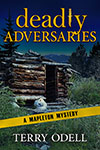
A 17-year-old gamer who goes by mythicalrocket holds the world record for the fastest typing speed – 305 words per minute for 15 seconds. According to news stories, rocket also typed “The Hobbit,” a tome with more than 400 pages, “in less than six hours.”
Rocket reached these supersonic speeds on an Apex Pro keyboard.
Pretty darn good, rocket. Now let me tell you what typing was like when I was in high school.
We used manual typewriters. In my touch-typing class, I reached the astonishing speed of 45 words per minute – with an amazing 47 errors. I didn’t have a lightweight high-tech keyboard, either. The keys on a manual were heavy and you had to pound them.

I used a Remington typewriter, a green tanklike beast. Talk about heavy metal – in the late 1960s typewriters weighed between 25 and 40 pounds. A professional typist could achieve 80 words per minute on these monsters, with no errors.
So why I am telling you about my pathetic 45/47?
I worked hard to screw up my typing. Back then, careers for women were rare. We were supposed to get married and have kids. Before the kids arrived, we could work as teachers, nurses or secretaries.

Nothing wrong with those professions, but they weren’t for me. I wanted to be a reporter. I figured if men didn’t have to learn to type, neither did I. Some part of my brain thought this was the way to equality.

After college, when I got my first job at a newspaper in 1970s, I was surrounded by men who could only type with two fingers, a process known as “hunt and peck.” I was proud to be one of these incompetent typists.
We typed our stories on cheap newsprint, the stuff that’s now used for packing.
Manual typewriters had a lot of disadvantages. There was no spell check, so if we made a mistake, we x-ed over it, or corrected it in pencil when we finished typing.
If we wanted to move a paragraph, there was no highlight and paste, or cut and paste button. We had to cut and paste for real, and we couldn’t use Elmer’s, glue guns or glue sticks.
First, we’d find the scissors (or steal our neighbor’s), then cut out the paragraph we wanted to move, grab the glue bottle with a brush, smear yellow glue on the paper, and glue in the new paragraph.
Since our news stories were often written on deadline, glue bottles could easily overturn, leaving yellow tumorous masses on our desks.
One more fun fact about manual typewriters. The only way we could get copies was with carbon paper, which got on your clothes and hands. Carbon paper was inserted between two pieces of copy paper, making a sort of sandwich. I was skilled at putting the carbon paper in wrong and carboning the back of my story.

No point in asking to use the office copy machine. They were expensive and restricted to upper management. I’d have a better chance of getting a pint of blood out of the managing editor than using the precious office copy machine.
On the internet, there are typing communities, and competitions for the fastest typists. Here’s mythicalrocket at work. https://www.youtube.com/watch?v=GGwKCi4FX84
I love watching those fingers fly over the lightweight high-tech keyboards.
That’s impressive.
But I’d like to see a real old-school speed competition on manual typewriters: deft digits manipulating unmanageable metal.

That’s the key to a real competition.

NOW HEAR THIS: Many of my audio books are free with a 3-month Audible trial. Including my Angela Richman mystery, DEATH GRIP. https://tinyurl.com/393ywnj2



 Becca Puglisi is an international speaker, writing coach, and bestselling author of The Emotion Thesaurus and other resources for writers. Her books have sold over 1 million copies and are available in multiple languages, are sourced by US universities, and are used by novelists, screenwriters, editors, and psychologists around the world.
Becca Puglisi is an international speaker, writing coach, and bestselling author of The Emotion Thesaurus and other resources for writers. Her books have sold over 1 million copies and are available in multiple languages, are sourced by US universities, and are used by novelists, screenwriters, editors, and psychologists around the world.








 I recently read—okay, started—a book that I set aside after three chapters. I’d received the book at Left Coast Crime, when one of the publishers hosted an “open house” for its authors in attendance and they had stacks of their books to sign and give away. I accepted almost all of them. It would have been rude to tell them you weren’t interested, especially since the books were free. I have giveaways via my newsletter, and I figured the books would be put to good use, either before or after I read them.
I recently read—okay, started—a book that I set aside after three chapters. I’d received the book at Left Coast Crime, when one of the publishers hosted an “open house” for its authors in attendance and they had stacks of their books to sign and give away. I accepted almost all of them. It would have been rude to tell them you weren’t interested, especially since the books were free. I have giveaways via my newsletter, and I figured the books would be put to good use, either before or after I read them.


